Owning a home is one of the most rewarding experiences of life. It is a retreat from the worries of the world, a place to raise a family, and for some, a home is a part of who they are. However, sometimes, you might feel like your home is missing something. On the inside, everything seems alright, but when you look at the outside, something is lacking! If you feel this way, chances are, you do not have a patio outback. Hre is the guide about pea gravel patio pros and cons cost DIY and ideas.
Having a patio comes with many benefits and perks. A patio provides you with a place to entertain your guests, it increases the equity of a home, and it is a perfect way to complement the outdoor features of your house. Still, many people do not have a patio outback, mainly because of the immense cost. However, a few relatively inexpensive patio options are available nowadays, with a pea gravel patio being one of them.

A pea gravel patio is easy on the budget, it is easy to build, and it looks surprisingly good besides a lawn despite its low cost. Also, compared to the smooth, hard surface of other patios, the small, round pebbles of a pea gravel patio feel good when walking barefoot and provide you with crunchy satisfaction. Even better is that you can build a pea gravel patio all by yourself in only a weekend.
So, if a pea gravel patio sounds like something you want to have, keep reading. In this article, we have rounded up everything there is to know about installing a pea gravel patio.
What Is Pea Gravel?
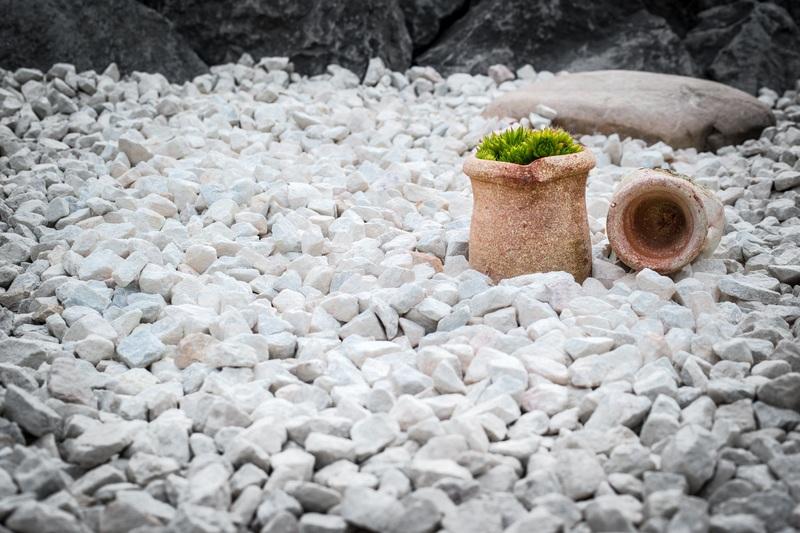
Pea gravel is a term used to refer to the small, rounded stones that measure between 1/8-inch to 3/8-inch, roughly about the size of the peas they are named after. These stones are formed due to natural erosion and weathering of the river rocks and stones before being carried by water to nearby river beds, lakes, creeks, and oceans.
Pea gravel comes in all kinds of natural colors, including shades of white, brown, black, and gray. During their movement from one place to another, the wave action and friction make them very smooth and more or less rounded. Pea gravel is decorative and used extensively in landscaping materials to create walkways, driveways, and patios.
However, do not confuse pea gravel with other types of gravel and crushed stones. For instance, there is the angle gravel which is used for constructing underground structures. In addition, some products are also labeled as pea gravel when they are just artificially crushed stones, for example, limestone pea gravel.
Pea stone gravel behaves very differently, and unlike most types of crushed stones, it will not lock together and form a stable base. So, when you use it, you will have to lock it in with some edging material, or you will lose many of the stones.
How To Build A Pea Gravel Patio?
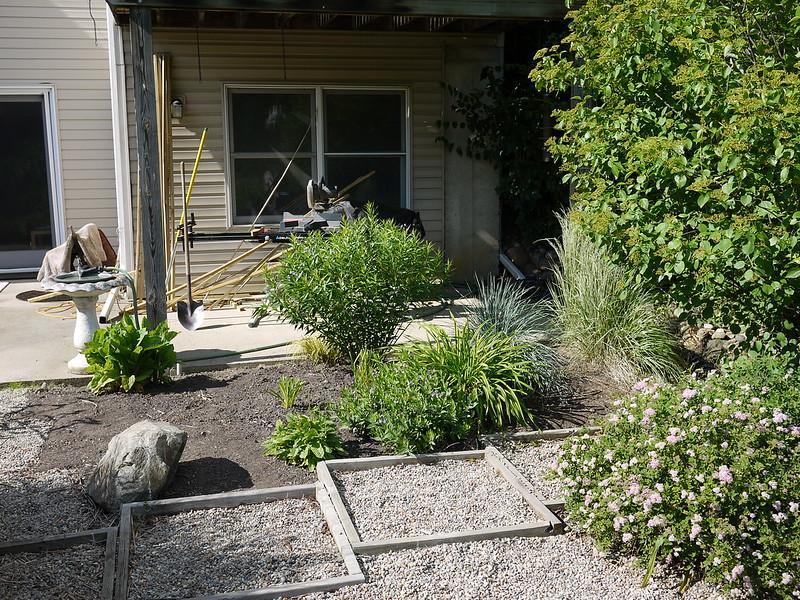
Pea gravel is one of the most simple materials to use for patios. Installing a pea gravel patio is easy and quick. If you use pea gravel, you can have a gorgeous patio for little money and a few days of work. Moreover, long-term maintenance of a pea gravel patio is a breeze.
Pea gravel is easy to handle and use, unlike cement and concrete patios, which can be technically challenging to install. However, it is loose and tends to shift. So, you will need to build a frame or a barrier around it to help contain it.
Nonetheless, here is a list of equipment and materials you will need to build a 250 square feet pea gravel patio. You easily calculate and can order more or less materials depending on the dimensions of your patio.
RELATED: 11 Outdoor Foliage Plants To Arrange Your Garden Like A Professional Landscape Designer
What You Will Need
Tools/Equipment
- Bow rake
- Drill and 1/2-inch wood bit
- Garden hose and spray nozzle
- Wheelbarrow or garden cart
- Mattock or pickax
- Measuring tape
- Shovel
Materials
- 12 inches long rebar pieces
- Three cubic yards of pea gravel
- Landscape timber for the frame
- Landscape fabric
- Landscape fabric pins (garden staples)
Select The Patio Space
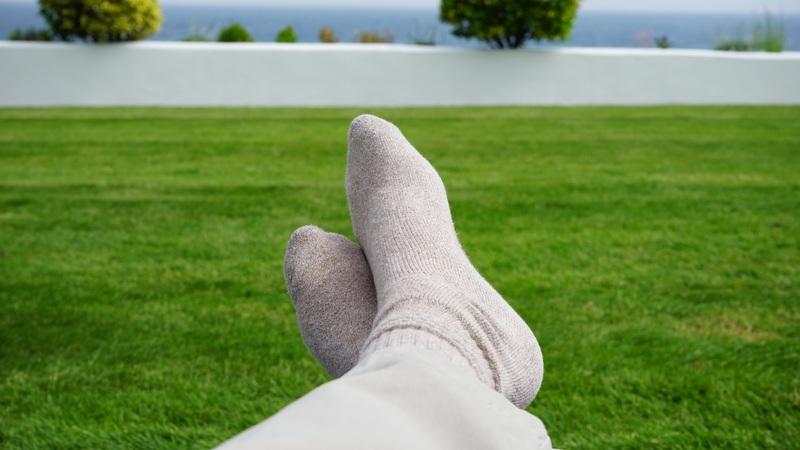
The first thing you need to do is decide where you will install the pea gravel patio. Because pea gravel contains smooth and round stones, it will not sit well in steep places. It will shift and spread quickly in areas steeper than 20 degrees.
Another thing to consider when choosing a location for a pea gravel patio is the water flow. While water can drain through the stones, too much water can wash away small pebbles, resulting in significant losses over time.
Call 811 | Call-Before-You-Dig Hotline
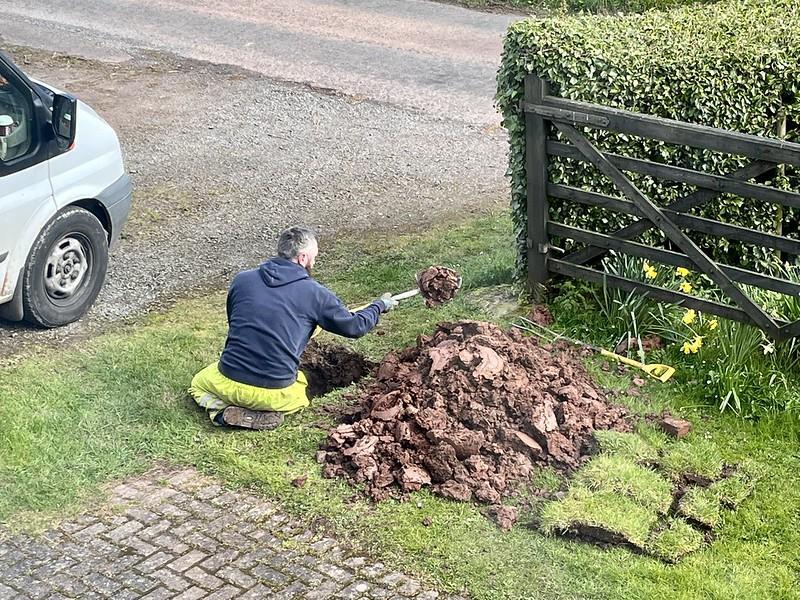
Since you will need to install a frame or boundary around the perimeter of your pea gravel patio, you will need to excavate a bit to lay down the frame or border. So, it is better to mark all the utility lines on your property before digging.
While you will not be digging too deep, there is a chance that you can damage plumbing, electrical, and phone lines. Also, make sure you call a few days before starting the project, as it can take them a while to identify and mark all the utility lines.
Order The Pea Gravel
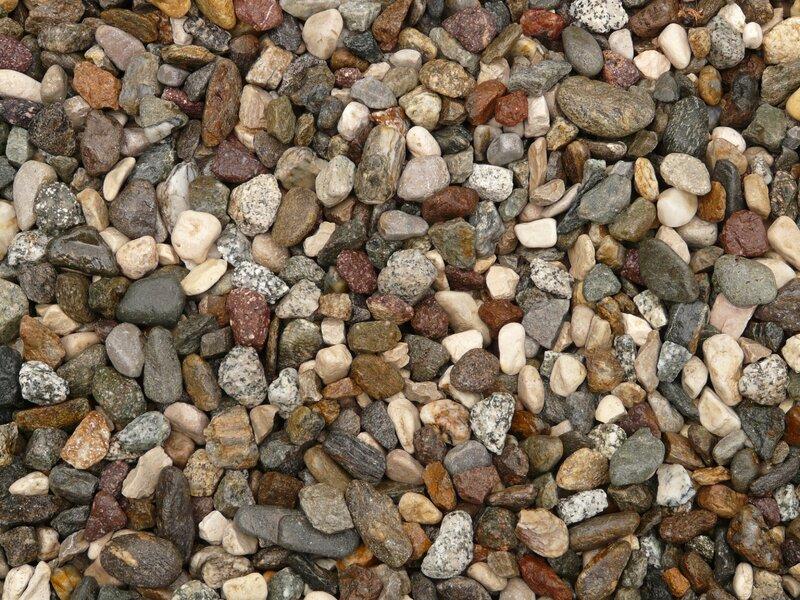
Once you have selected the patio space and marked all the utility lines, it is time to order the pea gravel. Once again, it is important to order pea gravel and not some other crushed stone. Pea gravel looks more aesthetic, and it is comfortable to walk on.
For a 150 square feet area, you will need about 1.58 cubic yards of pea gravel. It will create a 3-inch deep layer of pea gravel patio. Pea gravel patio thicker than this can make walking difficult. While a pea gravel patio thinner than this will expose ground in places.
Also, we suggest you order a little extra, maybe around two cubic yards. It will not only facilitate the order, but you will also have extra pea gravel around to replenish the lost stones over time.
Square The Perimeter
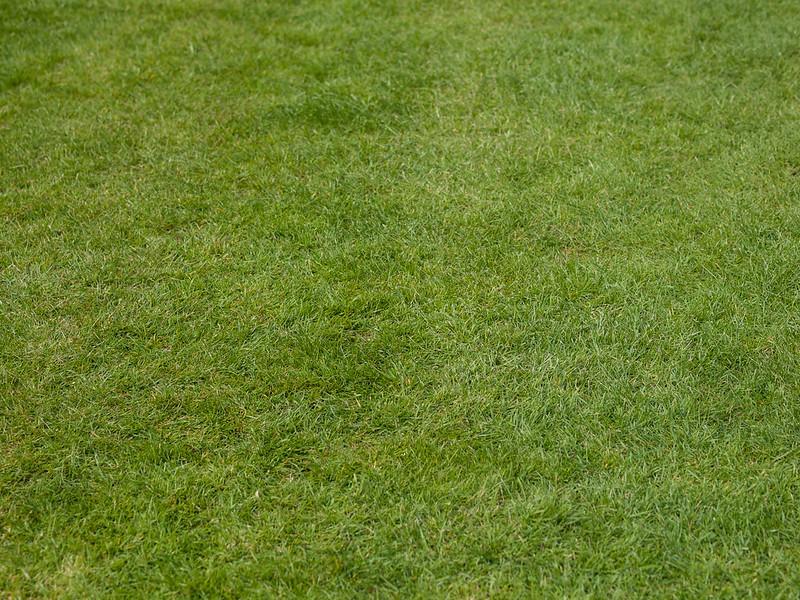
The next step is to mark the boundary of your patio. So, mark the edge with twine and take measurements between the diagonally opposite corners. Then, the frame can be made square by modifying the timbers as necessary.
You will know the frame is square when the two diagonal dimensions become equal. You can also use a garden hose or marking paint to lay out the patio. Moreover, it does not have to be square; you can do it any way you like if you know what you are doing.
Excavate The Area
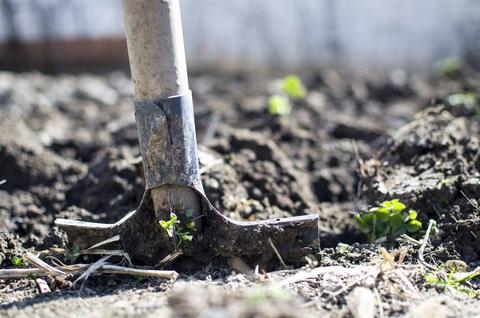
Once the patio area has been marked, it is time to excavate. You will need to dig out the site to a depth of about 4 or 4-1/2-inch. We highly recommend that you use a square point shovel for this purpose; it will create clean edges.
In addition to excavating the areas, make sure you remove all the debris from the site and make it as clean as possible. Also, if there are any big roots in the excavated patio area, cut them using a pickaxe.
Tamp & Rake

Next, you will have to ensure that the patio area does not have loose soil. You can compact the loose soil by repeatedly walking on it, or it can be done with a hand tamp. You can rent a plate compactor if the patio area is very large.
Another thing to consider is the patio leveling and grading. Tamp and rake the area so that it has a slight slope towards the lawn or drainage system. So, fill the low spots with soil and tamp the higher spots accordingly.
Lay Out The Frame
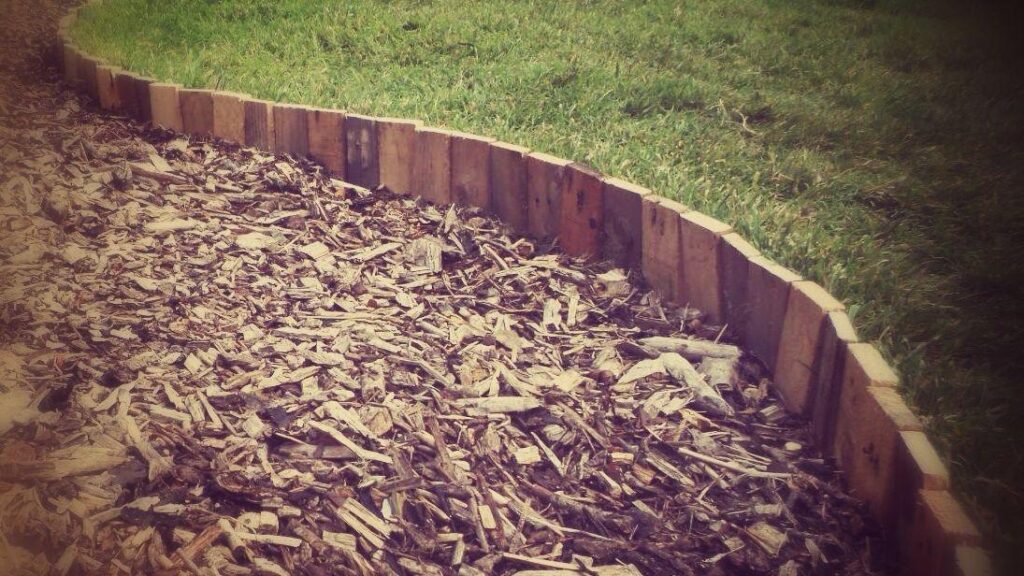
Now you will need to lay the frame around the perimeter of the area where you have chosen to build a patio. If you are using timber wood to create the border, make sure that you place them in such a way that they butt up against the side of each other.
It will ensure that you do not end up with any ugly protruding edges on your lawn. You can also use big round stones to set a perimeter around the gravel and prevent it from spilling. However, finding these stones can be challenging, depending on where you live.
Secure The Timber
If you are using timber, you will need to secure it into the ground. For this purpose, you will need to first drill 1/2-inch holes in the wood. Then, drive rebar pieces (about 1 foot long) through these holes using a hammer to fix the timber in their place.
Install Landscape Fabric
Next, bring out the landscape fabric roles and completely cover the area inside the frame. Make sure the fabric pieces overlap by at least four inches at each junction. In addition, the fabric should extend by at least one to inches up the containment frame.
Once you have covered the area with landscape fabric, secure it in its place with landscape fabric pins. Also, make sure that the fabric is not folded in any place.
Fill The Space With Gravel
Once everything is set up, it is time to add the gravel. You should always start at one side of the frame or border of the patio area. So, fill the garden cart or wheelbarrow with gravel and start dumping gravel onto the landscape fabric.
You can also use a shovel to lightly toss pea gravel at different places throughout the patio to secure the landscape fabric in its place further. However, make sure that you do not tear the fabric when walking or with the head of the hovel.
When the area has been covered, use the rake to smooth out and level the pea gravel. If needed, spray the patio with the garden hose to clean the area. And, congratulations, the patio is installed and ready to use.
How Much Pea Gravel Do You Need?
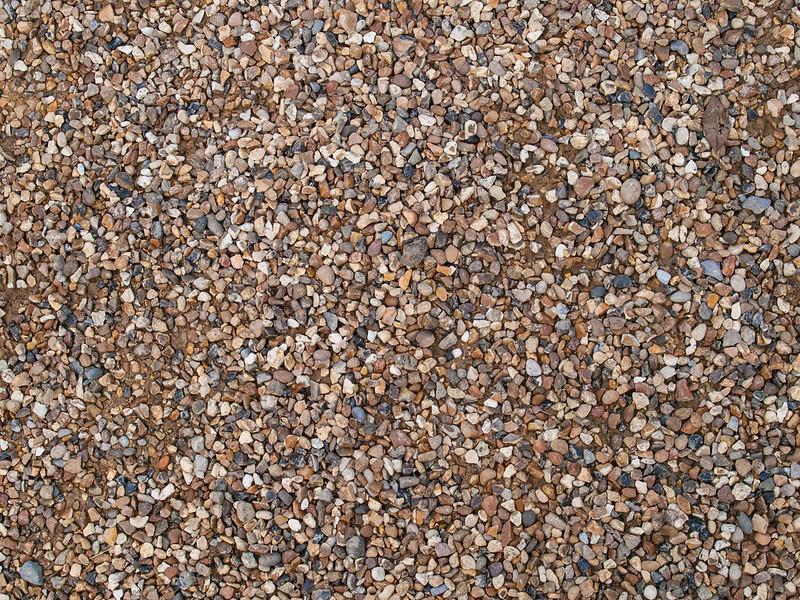
In the above guide, we suggested you order around two cubic yards of pea gravel for laying a 3-inch deep patio on a 250-square feet lawn. However, you can easily calculate how much pea gravel you need by calculating the dimensions and depth of your desired patio.
For instance, if the desired depth is 2.5 inches deep and you have an area with the dimensions of 20 feet x 20 feet. Here is how you can calculate how much pea gravel you need.
- First, convert the feet into inches
- 20 x 12 = 240 inches.
- Next, multiply the length, width, and depth together
- 240 (length) x 240 (width) x 2.5 (depth) = 144,000 cubic inches
So, you need around 144,000 cubic inches of pea gravel to create a patio. However, most places sell pea gravel in cubic feet or cubic yards. So, use the information below to calculate how many cubic feet or cubic yards of pea gravel you need.
- Multiply your number with 0.000579 to calculate how much pea gravel you need in cubic feet. 144,000 x 0.000579 = 83.38 cubic feet
- Or, if you want to know how many cubic yards of pea gravel you need, multiply the number by 0.0000214. 144,000 x 0.0000214 = 3 cubic yards
Pro Tip: Try to purchase more pea gravel than you need to compensate for the waste and losses during installation. That way, you will also have some spare pea gravel for repairs or refills.
Cost of Pea Gravel Patio
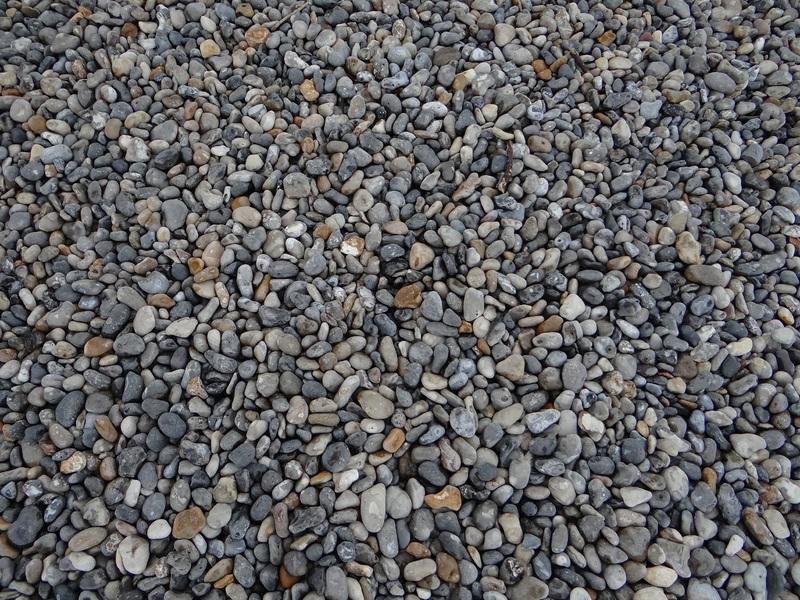
When you do it yourself, a pea gravel patio is easy on the budget, costing about $3 to $5 per square foot. However, there is a drawback to installing a pea patio yourself. You will have to buy all the supplies and materials yourself. Estimated costs of needed supplies and materials are given in the table below.
| Crushed rock for base (optional) | $350 | No-dig plastic landscape edging | $40 |
| Garden hose and nozzle | $40 | Protective safety glasses | $10 |
| Hammer | $25 | Square point shovel / transfer shovel | $35 |
| Landscape fabric | $50 | Tamper | $65 |
| Landscape rake | $40 | Tape measure | $35 |
| Landscape staples (for fabric) | $10 | Wheelbarrow | $150 |
| Level | $25 | Work gloves | $15 |
Now you may have many of these items already, or you can rent or borrow many of these things, which will further reduce the cost. However, here is a contractor cost guide for people who do not want to go through the hassle of collecting the materials and then installing the patio on their own.
Note: The guide is designed for an average-sized 250 square feet patio.
| Basic | Better | Best | |
| Material Prices | $131.25 – $137.50 | $143.75 – $150.00 | $156.25 – $162.50 |
| Installation Cost | $406.25 – $468.75 | $500.00 – $593.75 | $656.25 – $687.50 |
| Total | $537.50 – $606.25 | $643.75 – $743.75 | $812.50 – $850.00 |
| Total Average Cost per square foot | $2.30 | $2.775 | $3.325 |
Pea Gravel Patio | Pros & Cons
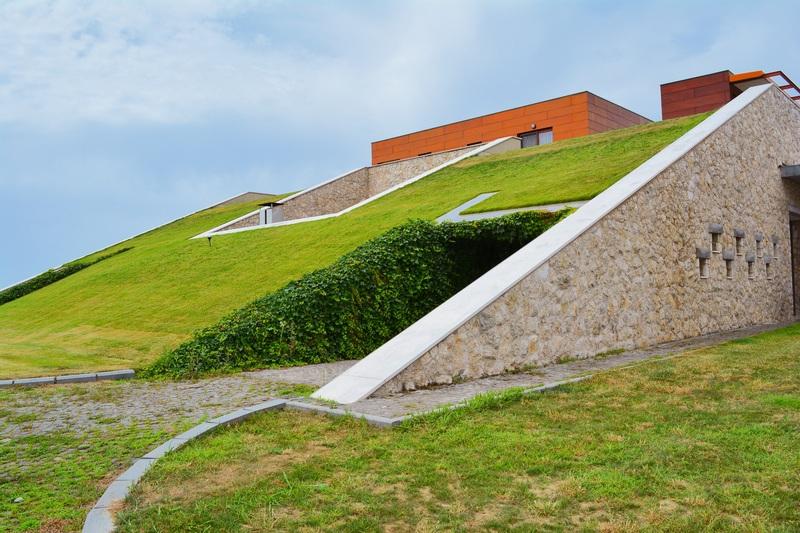
Although pea gravel is an excellent material for patios on home lawns, it is not perfect. There are some drawbacks of installing a pea gravel patio which might be a deal-breaker for some people. So, let’s quickly go ahead and discuss the pros and cons of installing a pea gravel patio which will help you determine if it is the right choice for you or not.
| Pros | Cons |
|---|---|
| Pea gravel is one of the cheapest materials to use for patios. Moreover, labor costs associated with installing pea gravel are also very low. | Pea gravel patio’s first and biggest drawback is that it moves and spreads. This could be a problem if you have many pets or naughty children. |
| Pea gravel is easy to handle, and creating a pea gravel patio is very easy. You can do it easily yourself with some basic tools and a little know-how. | Since a pea gravel patio moves and spreads, it may cause it to become uneven. Moreover, heavy furniture will sink in pea gravel patios. |
| Unlike concrete and cement patios, there is no surface water run-off problem with pea gravel patios. Instead, water simply drains through the stones. | A pea gravel patio is cumbersome and unsuitable for moving strollers and wheelchairs. This might be a problem in some households. |
| Pea gravel comes in shades of black, brown, gray, and white. All these colors mix very well with the landscape of a garden and lawn. | As stated above, pea gravel stones move easily. Over time, there might be ground visible underneath, and you will need to refill these spots. |
| Unlike a patio made of pavers, a pea gravel patio does not allow the weed to grow. This keeps your lawn looking good and safe. | Since the stones in pea gravel are small, a pet or child can easily put them in their mouth. Unfortunately, this could be a deal-breaker for many people. |
| Once correctly installed, a pea gravel patio needs very little maintenance. You will only need to rake the surface occasionally to level the patio. | A pea gravel patio is not recommended in areas with a lot of snowfalls. It isn’t easy to de-ice and takes quite a bit of time. |
| It is really fun to walk barefoot on a pea gravel patio. The small round pebbles pack a crunchy stratification when walked on barefoot. | |
| You can create a pea gravel patio of any shape very quickly and easily, unlike pavers that need to be cut to obtain specific shapes. |
RELATED: Tall Fescue Vs. Kentucky Bluegrass | Which Is Better & Which Should You Choose?
Frequently Asked Questions (FAQs)
Should I put anything under pea gravel?
In sand soils, you will need to add a base layer of crushed stone or some other materials to hold the pea gravel in its place and prevent it from sinking. However, a base layer is usually not needed in clay soils under pea gravel.
Is pea gravel cheaper than pavers?
The cost of installing a pea gravel patio ranges between $3 to $5 per square foot. In contrast, a paver patio will set you back anywhere between $15 and $20 per square foot. In addition to being cheaper, a pea gravel patio is easier to install.
How do you get pea gravel to stay in place?
There are many ways you can stabilize your pea gravel patio. You can use a timber frame around it to hold the pebbles in their place. However, if that is not your thing, you can also use some large stones, which will also add to the curb appeal.
Can you put pea gravel directly on dirt?
It is not recommended to put pea gravel directly on the dirt. Instead, you should first cover the ground with landscape fabric and then spread the pea gravel on top. Also, if you have loose sandy soil, you must add a base layer of crushed stones under the pea gravel.
Is pea gravel high maintenance?
In general, pea gravel is considered semi-high maintenance. You will need to rake the surface of your patio now and then to keep it leveled. Also, pea gravel moves and spreads. So, it will need to be refilled now and then as well.







